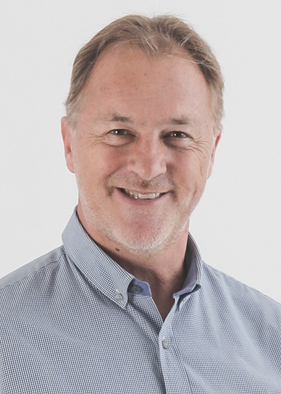May 2020, Year XII, no. 5
Jorge Muñoz Wells
The Trusted Mayor
"This relationship of trust between the city administration and the citizens of Lima means that citizens trust and demand the utmost from their ‘Mayors’; mainly because our decisions have a direct impact on their lives."
Telos: In Italy the Prime Minister is indicated by the Parliament. However, every time there are talks about changing the Constitution and going for a direct popular election, people use the expression ‘The Mayor of Italy’. This seems to imply that Mayors have more power to impact their citizens’ everyday life even than the Head of the Government. Does this apply also to Peru?
Jorge Muñoz Wells: In Peru, the municipalities are the closest institution to citizens within our governmental structure, in the case of the Metropolitan City of Lima, the relationship with its inhabitants is carried out through by 42 District Municipalities, which make it up, to respond to the needs of the population.
This relationship of trust between the city administration and the citizens of Lima means that citizens trust and demand the utmost from their ‘Mayors’; mainly because our decisions have a direct impact on their lives.
Thus, it is important that the Municipality maintains permanent coordination with the Central Government; even more in the emergency, we are experiencing with the Covid-19 pandemic.
The crisis of the political parties is probably the origin of the globally spread anti-political sentiment. However, this theory seems to be less true in the relationship between citizens and Mayors. Do you agree?
I think the citizens of Lima seek in the figure of the Mayor an authority that comes up with solutions to the city’s problems, not just a political figure. Lima is a city with a lot of challenges to face, starting with transport, security, the environment, and essential services for citizens, and this fact has become even more evident during this emergency. This is why, as Mayor, my mission is to work transparently, along with citizens, to direct good policies and to make Lima an organised, clean, safe, and inclusive city for all limeños.
Lima is an immense city with more than 8 million inhabitants, almost a small state. A city that you have administered for just over a year. But you are certainly not a novice in the management of city affairs, since from 2011 to 2018, you were Mayor of Miraflores, one of the most important districts in Metropolitan Lima. What are the differences between the two experiences that struck you the most? And the most important goals you have achieved this year?
Like you refer, Lima is a City-State with different realities, little homogenous and difficult to manage under one perspective; therefore, we must need a broader vision to adapt our public policies on all realities of the city and these have to be useful for our citizens. From the first day of my mandate, we knew it would not be an easy challenge, and the change of a city with the complexities as Lima would be a gradual yet constant path, and we as the city administration are committed to achieving this goal.
2019, was a year to organise but it was also a year of progress, we found various problems left by the previous administration, and the first step was to introduce new form to work without corruption. In this way, during our first year of administration, in terms of traffic, we implemented the Plan “Pico y Placa” (Peak and Plate) to limit the number of vehicles on the main roads during rush hour and to improve traffic flow within the city. Cars with either even or odd-numbered license plates can circulate depending on the day of the week. Also, we implemented an electronic control system, installing video cameras on the main roads.
In the sector of road infrastructure, we have completed construction of works such as the Armendariz viaduct and the enlargement of Via Costa Verde, as well as other important arteries in the areas of North, South, East and Central Lima.
Concerning of security, we developed the program “Lima 360°, todos juntos por la Seguridad ciudadana” (Lima 360°, all together for citizen security), through which the Peruvian National Police are coordinating actions to the Serenazgo, the five interdistrict groups of Lima and the other actors involved in guaranteeing the security of the city.
Another important step forward was to launch an interconnected video surveillance system for over twenty-three districts in Lima, allowing joint security operations to be conducted among districts.
The outbreak of Covid-19 has put a strain on the work of Mayors around the world. One of the initiatives you have taken was the creation of the 'Casa de la Mujer', a space where women victims of violence, and their children, can find a safe haven at a time when they are forced by mandatory isolation to remain in the same space with their aggressors. How's it working? And do you think the 'House of Woman' will remain standing even after the sanitary emergency?
Although compulsory isolation has been a protective measure for the population, some groups were most affected in this period, such as the homeless and women who suffer from family violence. When faced with this situation, we did not hesitate to set up, very quickly, shelters for these people.
One of these was the Casa de la Mujer, a place where women and their children not only receive food and lodging, but social, psychological, legal, and healthcare assistance as well. In this place, the aim is to give strength and encouragement to women, so they can overcome this difficult moment that they are being forced to live through. This initiative will certainly continue after the emergency, we are already working in the second house of woman because we know this is a problem rooted in our society and we will spare no efforts to provide help and protection to the victims of violence.
Marco Sonsini
Editorial
According to Italo Calvino, cities are made up of many different things: memories, desires, signs of a language… Since colonial times, Lima has been used as the main setting in Peru’s extraordinary literary tradition.
The city began featuring in the works of poets living in the Capital, and with their verses, they fashioned the epic story of the foundation and magnificence of the Viceroy’s Court. It was from here that the literature about the city began to evolve, over the following centuries, right up to the 19th century, when Riccardo Palma, with his Tradiciones peruanas (1872-1910), created a literary corpus where colonial and republican Lima take on the resonance of a spiritual space set within the collective memory of the limeños.
Lima experienced a literary renewal in the mid-1900s when writers belonging to the so-called Generation of the '50s began to interpret it as a totally different city: modern and contradictory, in the throes of urban transformation. Palma’s images of its bucolic past vanished with the explosion of the industrial city.
Mass immigration from the rural areas caused the city to grow at a dizzying, uncontrolled rate, in both the residential areas and the newly formed shantytowns or “young towns” on the slopes of the Andes. Lima became the opposite of what Rubén Darío referred to as “The City of Grace”. The Generation of the '50s writers, exponents of urban neorealism, began to speak out against the urban disarray, among other things, of the new city. Mario Vargas Llosa is one of the leading pioneers in this group of writers that do more than just portray one reality; they transform their narrative into something spiritual, giving Lima and its “space” political-ideological significance. Yes, Lima is a place to be explored, but these writers were concerned about more than just social order. What they were concerned about was existential: they wanted to portray psychological and moral behaviour and conflict while also making Lima a place that was representative of a problem involving the whole Country. Vargas Llosa sees Lima through the lens of animism; the city is the ideal point of view from which to line up everything man is searching for, all his anxieties, dreams, fears and aggression: the city as the sum of the individuals who inhabit it, experience it, transform it.
This magnificent and terrible City-State, as our May interviewee Mayor Jorge Muñoz Wells defines it, has been through the opposite experience… on 17 April the President of Peru, Martin Vizcarra, decided to reopen the capital and allow many of its inhabitants to return to their natal villages so they would not die of starvation. In the city, locked down by the army, the Mayor decided to arrange for buses to take back to the rural areas all the limeños who were in Lima because they were working under the table and were no longer getting paid as a result of the lockdown.
The pandemic gave rise to a social crisis, and according to Muñoz Wells, Covid-19 uncovered the problem of “women who are victims of domestic violence. When faced with this situation, we did not hesitate to set up, very quickly, shelters for these people. One of these was the Casa de la Mujer, a place where women and their children not only receive food and lodging, but social, psychological, legal and healthcare assistance as well. In this place, the aim is to give strength and encouragement to women, so they can overcome this difficult moment that they are being forced to live through.” And Lima certainly is not the only city grappling with violence against women and the Coronavirus. Let’s not forget that during the months of lockdown, in Italy there was a 73% increase in calls to gender violence hotlines compared to the same period in 2019. These data were collected by the Italian National Institute of Statistics (ISTAT) in the study “Gender-based Violence during Covid-19”. In Italy, one of the smartest initiatives to help women who are victims of violence and literally locked inside their homes with their aggressors was Mascherina 1522. Andrea Catizone, a lawyer and long-time defender of women and minors, came up with the idea and this campaign was promoted by a spontaneous group of women who have called themselves Staffetta Democratica (Democratic Relay). All anybody had to do was say “I want a 1522 mask” to their pharmacist to report domestic violence. This was the pharmacist’s cue to get them help.
We would like to wrap up with our usual nod to this month’s cover. We often draw on the ity's heraldry as sources of inspiration, and here Lima is represented by a magnificent eagle – recalling the two eagles of St. John, the symbol of the Crown of Spain – holding a blue shield with a red border. The eagles are featured on Lima’s coat of arms, given to the city on 7 December 1537 by Emperor Charles V of Spain and his mother Queen Joanna of Castile (Joanna the Mad). Above the shield are their initials “I” (Ioana) and “K” (Karolus) with a gold star on top of them. In the centre of the shield is the Star of Bethlehem and three gold crowns symbolising the Three Kings. Why? Because Lima was founded by Francisco Pizarro on the day of the Epiphany in 1535, and he called it Ciudad de los Reyes (City of the Kings).
Mariella Palazzolo

Jorge Muñoz Wells has been the Mayor of Lima since 2019. He has more than twenty years of experience in municipal management: from 1999 to 2010 he was Alderman of Miraflores, one of the District Municipalities of Lima; from 2003 to 2006 he was Vice Mayor of Miraflores. In 2011 he was elected Mayor of the same District, and in 2015 he was re-elected. He is a lawyer, graduated at the Pontificia Universidad Católica del Perú. He was a partner of one the most prestigious law firms in Lima. He attended management courses in Japan and citizen security ones in Israel. Moreover he achieved an M.A. on Urban Planning and Environmental at the University of Barcellona (Spain). Muñoz Wells was a member of the National Council of Competitiveness (CNC) and also President of the National Network Coordinator of OMAPED (Oficina Municipal de Atención a la Persona con Discapacidad), devoting great effort to disabled people. Currently, he is a member of the Consultative Council for the Competitiveness at the Pacifico University. He represents the Cities of the Climate Leadership Group - C40 and the Cities of the Latin American and Caribbean Region before the Board of Directors of the Global Covenant of Mayors for the Climate and Energy. As Mayor of Lima, his Government Plan is focusing on citizen security, transportation, fight against corruption and public cleanliness. During his political career, he received some recognitions, as the Reina Sofia de España Award in 2012, the Buenas Prácticas en Gestión Pública Award in 2012 and the Las Buenas Prácticas en Gestión Pública Award in 2013 and 2014, in the Urban Security category.
Jorge was born in Lima 58 years ago. He is passionate about sports, especially football. When he was a student, he played in the football team of his University. Now his favourite sports are cycling and Paddle surf. His family and his loved ones are his biggest treasure: he has been married for over 30 years with Cuty Montagne and they have three sons. He spends all his free time with them.
Marco Sonsini







SocialTelos